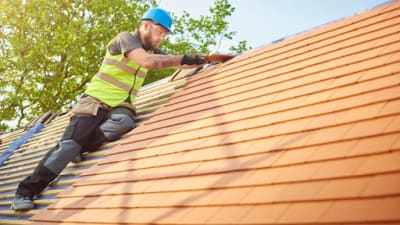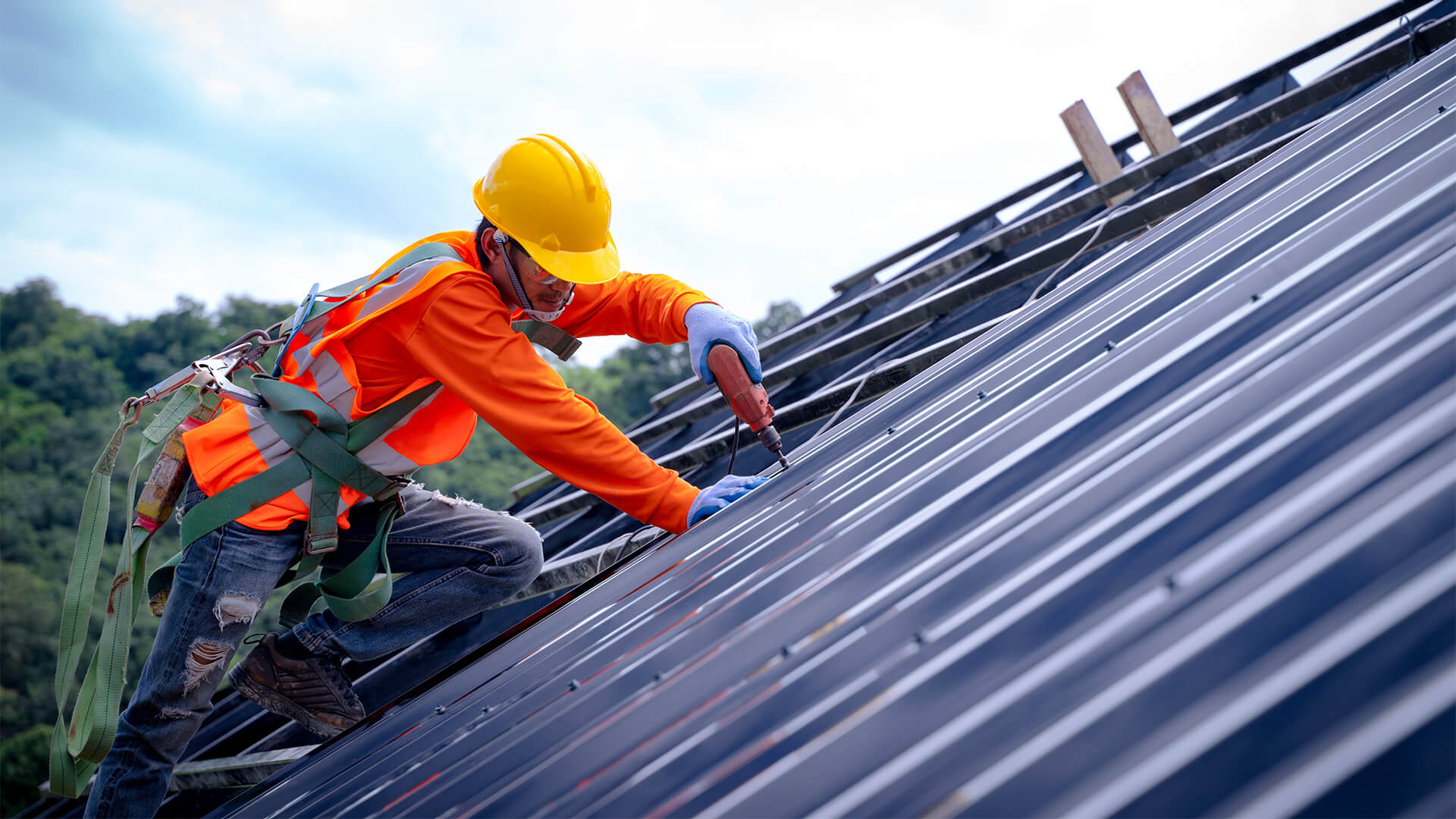Comprehending the Different Types of Roofings: A Comprehensive Guide for Homeowners
In the world of homeownership, choosing the suitable roof covering design is a choice that brings considerable implications for both functionality and aesthetic allure. With an array of options-- ranging from the conventional gable to the contemporary flat-- each type presents unique benefits and obstacles that ought to line up with the homeowner's particular demands and environmental factors to consider. Understanding these differences not only help in making an enlightened option but additionally influences long-term maintenance and energy efficiency. As we discover the ins and outs of numerous roof covering types, it comes to be noticeable that size does not fit all; the best option may stun you.
Gable Roofings
Gable roofing systems, identified by their triangular form, are among one of the most popular roof covering designs as a result of their simpleness and effectiveness in dropping water and snow. This style features two sloping sides that meet at a ridge, permitting reliable drain and lessening the risk of water build-up. The steep pitch commonly connected with saddleback roofs enhances their ability to handle hefty rainfall, making them ideal for numerous environments.
In addition to their useful advantages, saddleback roofs offer aesthetic adaptability. They can be adjusted to different building designs, from typical to modern-day homes. The design can likewise fit added attributes such as dormer home windows, which enhance natural light and ventilation in the attic space.
Furthermore, gable roofs provide ample space for insulation, adding to energy efficiency. Property owners can pick from a selection of roof covering products, including asphalt tiles, steel, and floor tiles, better boosting modification choices.
Regardless of their advantages, saddleback roofs may require added assistance in areas susceptible to high winds or heavy snowfall. In general, the gable roofing stays a favored choice as a result of its mix of functionality, longevity, and visual appeal.
Flat Roofs
Level roofing systems are often recognized for their minimal layout and useful applications, specifically in business and commercial settings (oahu roofing). These roof coverings include a straight or almost horizontal surface, which enables for very easy building and flexible room application. While they might do not have the visual appeal of angled roofs, flat roofing systems provide countless benefits, especially in city atmospheres where making the most of area is vital
Among the key advantages of level roofings is their accessibility. Homeowners can make use of the roofing space for numerous objectives, such as roof gardens, balconies, or solar panel setups. Additionally, flat roofing systems are generally much more economical to install and preserve contrasted to their sloped equivalents, as they call for less materials and labor.
Nevertheless, level roof coverings do present certain difficulties. Appropriate drain is vital to avoid water merging, which can bring about leaks and structural damages. For this reason, selecting high-grade waterproofing products and normal evaluations are vital for ensuring durability. Common materials made use of for flat roofing systems include built-up roofing (BUR), customized bitumen, and single-ply membrane layers, each offering distinct advantages. In general, flat roofings work as a functional and versatile choice for several property owners and services alike.
Hip Roofing Systems
Hip roofs are characterized by their sloped sides that assemble at the top, forming a ridge. This layout stands out from gable roofs, as all four sides of a hip roofing incline downwards toward the wall surfaces, supplying a more secure framework. The angle of the slopes can vary, permitting flexibility in building aesthetics and capability.
One of the key benefits of hip roofing systems is their capability to stand up to heavy winds and negative climate condition. The sloped surface areas allow much better water drainage, minimizing the danger of leaks and water damage. Furthermore, hip roof coverings offer increased attic room, which can be made use of for storage space or also exchanged habitable areas.
Nonetheless, building a hip roofing can be a lot more complicated and pricey than simpler roof covering types, such as gable roofs. The extra material and labor associated with creating the inclines and making sure appropriate structural integrity can cause higher costs. Regardless of these drawbacks, many home owners prefer hip roofing systems for their resilience, aesthetic appeal, and possibility for power efficiency.
Mansard Roofing Systems
Mansard roof coverings, usually recognized by their unique four-sided layout, feature 2 inclines on each side, with the lower incline being steeper than the top. This architectural style, originating from France in the 17th century, is not just cosmetically appealing but functional, as it maximizes the functional area in the top floors of a building. The steep lower slope enables for even more clearance, making it an ideal option for loft spaces or attics, which can be exchanged living areas.
Mansard roofings are characterized by their convenience, suiting various architectural styles, from conventional to contemporary. They can be built with different products, discover this consisting of asphalt shingles, slate, or metal, providing house owners with a series of options to fit their preferences and spending plans. Furthermore, the style enables the integration of dormer windows, enhancing all-natural light and ventilation in the upper levels.
However, it is important to think about the potential downsides. Mansard roofings might call for even more maintenance as a result of the complexity of their design, and their steep slopes can be testing for snow and rain drainage. Generally, mansard roof coverings combine beauty with usefulness, making them a preferred option among house owners seeking unique architectural functions.
Shed Roof Coverings
As homeowners progressively seek simpleness and performance in their building designs, lost roofings have become a preferred option. Defined by a single sloping aircraft, a shed roofing system provides a minimal visual that enhances various home styles, from contemporary to rustic.
One of the key benefits of a shed roof is its simple building, which usually translates to reduce labor and material costs. This design permits efficient water drainage, reducing the risk of leaks and water damages. In addition, the upright slope gives sufficient area for skylights, enhancing natural light within the inside.
Dropped roof coverings likewise provide adaptability in regards to usage. They can be effectively incorporated into enhancements, garages, or exterior frameworks like pavilions and sheds. Additionally, this roofing style can fit different roof products, including metal, asphalt shingles, or also eco-friendly roofings, aligning with environment-friendly initiatives.
However, it is necessary to consider regional environment conditions, as hefty snow tons might necessitate modifications to the roof's angle or framework. In general, lost roofs offer a useful and visually pleasing option for property owners seeking to take full advantage of functionality without compromising style.
Verdict


Gable roofing systems, identified by their triangular shape, are among the most popular roofing styles due to their simplicity Learn More Here and performance in dropping water and snow. oahu roofing. The high pitch commonly linked with gable roofings enhances their ability to take care of heavy rainfall, making them suitable for various environments
While they might lack the visual appeal of pitched roofings, flat roof coverings supply various benefits, particularly in metropolitan atmospheres where taking full advantage of area is vital.
